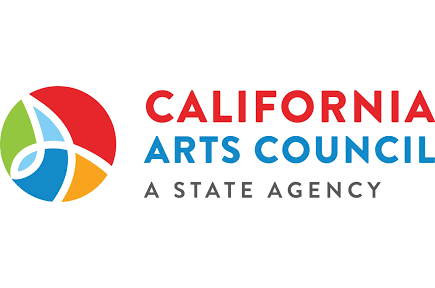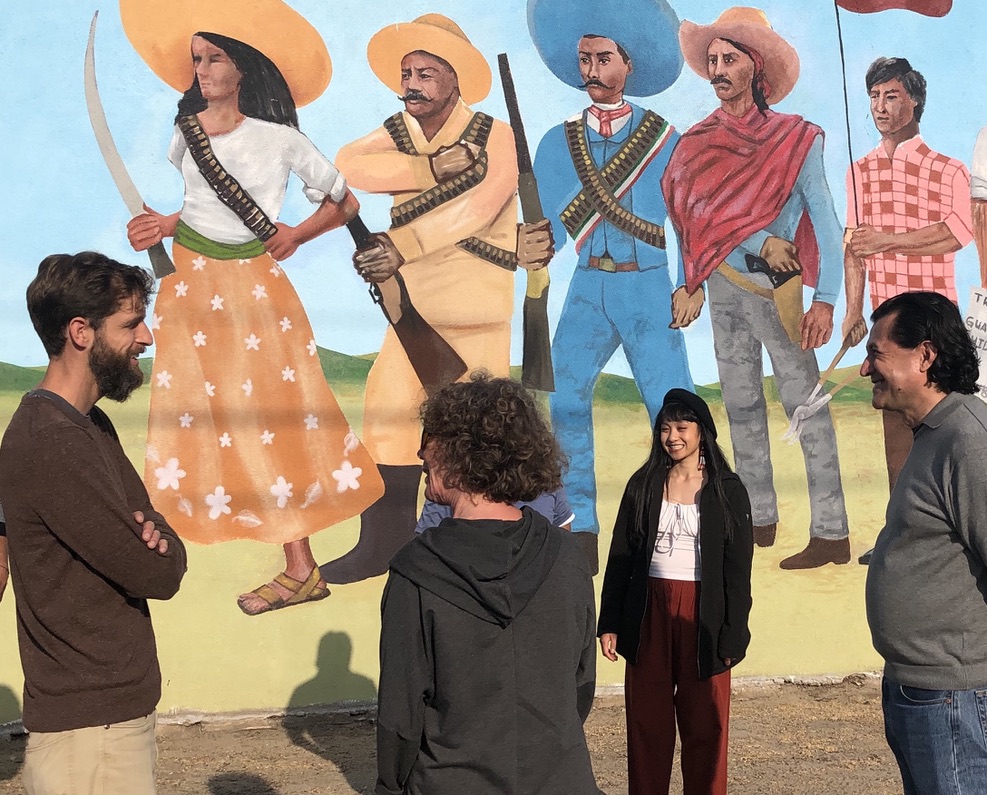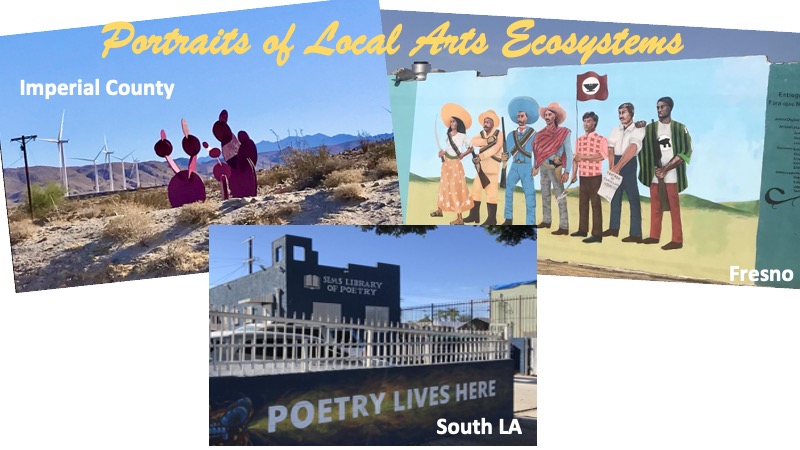This piece is part of a larger series of On Our Minds, the fourth in a series examining more equitable practices, reflects openly and self-critically on the underlying processes, assumptions, and structures driving inequity and what would make the arts and culture sector more equitable.

As part of an evaluation of the California Arts Council’s grantmaking that we conducted in collaboration with Scansion, we examined California’s arts funding landscape through an equity lens. Our analysis intentionally prioritized racial equity with the awareness that racial identities intersect with many other systemically disadvantaged identities (e.g., gender, sexuality, disability, language, and veteran status). Geography—specifically, the urban-rural divide—served as a second lens through which we viewed the distribution of arts resources.
Results from Our Analysis
Our analysis yielded some striking insights into the distribution of resources in California’s arts ecosystem:
- Of the 13,774 nonprofit arts organizations in California, there are 108 with annual budgets of over $10 million in California. These 108 institutions represent less than 0.78% of the nonprofit arts organizations in the state. However, they receive 70% of the available resources. 50% of all arts grants from private foundations flow to those organizations, as do 73% of all donations from individuals.
- Only 6 of the 108 arts nonprofits with budgets over $10 million are located in rural census tracks. Just 4 are BIPOC-centered organizations.
- Only 11% of the total dollar amount that private foundations award to arts nonprofits go to BIPOC-centered organizations, although they represent 18% of all arts nonprofits.
- Individual giving is even less equitable in terms of the proportion of donations that goes to BIPOC-centered arts organizations: only 5.9% of individual giving (including donations from trustees) goes to BIPOC-centered organizations. Rural arts nonprofits receive just 4.4% of the donations from individuals.1
- Through its portfolio of grant programs, the California Arts Council works towards offsetting inequities that BIPOC-centered and rural nonprofits face in accessing support from private sources like foundations, trustees, and individual donors. Whereas BIPOC-centered organizations represent 18% of the arts nonprofits in California, they receive 30% of the funds that CAC distributes in the form of grants. However, due to its limited budget, the agency’s direct grants to arts organizations have little influence on the overall distribution of resources in the ecosystem.
Methodological Questions
Given our objective of pinpointing systemic inequities in California’s arts ecosystem, identifying BIPOC-centered organizations was vital. However, it also raised many definitional and methodological questions. We worked with the research team at the National Assembly of State Arts Agencies to develop a method of identifying organizations that have the primary mission of serving and/or representing communities of color.

Through a systematic review, NASAA built a list of more than 300 unique search terms. These described cultural identities, ethnicities, and culturally relevant terms and tagged organizations whose names and/or mission statements featured those terms. This initial tagging then went through several validity checks and refinements. Manual checks of 80 randomly sampled organizations coded as BIPOC-centered and 80 that were coded as non-BIPOC-centered suggest a coding accuracy between 87% and 92%.
Of course, many organizations that are not explicitly “BIPOC-centered” also serve BIPOC communities to some extent, present artists of color, and feature diverse forms of cultural expression. Still, in exploring racial inequities in access to resources, it makes sense to focus on organizations that are most likely to face systemic discrimination.
The Magnitude of the Problem
While many arts organizations and funders have sought in recent years to address inequities that result from structures and practices within their institutions, far less attention has been paid to researching, understanding, and addressing inequities in the arts at the systems level. Yet, it seems clear that no amount of board trainings, EDI statements, or audience outreach initiatives at the organizational level will be able to undo the widespread systemic biases. Even the government agencies, foundations, and major donors are likely unable to undo the systemic challenges – at least not if they continue to operate in their own silos.
To demonstrate the magnitude of the problem: Private foundations contribute approximately $670 million to the arts in California every year, and (extrapolating from DataArts data) California arts nonprofits may receive twice that amount from individual donors, for a total of close to 2 billion dollars annually. Of those 2 billion dollars from private sources, somewhere between half and three–quarters are flowing to the 108 largest organizations in the state, of which, as we have seen, less than 4% are BIPOC-centered.

An agency like the California Arts Council, with its general fund allocation of $26 million in 2022, would hardly budge the needle towards a more equitable distribution of resources in the arts even if it awarded 100% of its grants to BIPOC-centered organizations and artists of color. The vast majority of resources in the ecosystem would still flow to non-BIPOC-centered organizations. To truly reduce inequities, one would need to change the systems through which resources are allocated, perhaps by creating opportunities and incentives for foundations and individual donors to shift a portion of their substantial resources towards smaller, lesser-known organizations that serve communities of color.
What’s Next
The challenges of systemic inequities can appear insurmountable, and no one seems to be responsible for fixing inequities at the systems level. However, systems-level research can make patterns of inequity visible and suggest leverage points where interventions may be most effective in producing lasting systemic change.

1 The data on individual donations comes from DataArts, and it’s only available for 2,369 organizations. The organizations that share their financial information with DataArts skew towards larger budget size categories when compared to the full dataset of California arts nonprofits.

This is piece is part of our series on structural inequities in the arts. You can read other posts here:
- On Our Minds – Audio Edition: Kacie Willis interviews Marc Bamuthi Joseph and Trés McMichael about systemic inequity. They work in the Social Impact program at the Kennedy Center.
- What We Mean When We Talk About Systems: John Carnwath summarizes a conversation he had with John Shibley about systems thinking.

